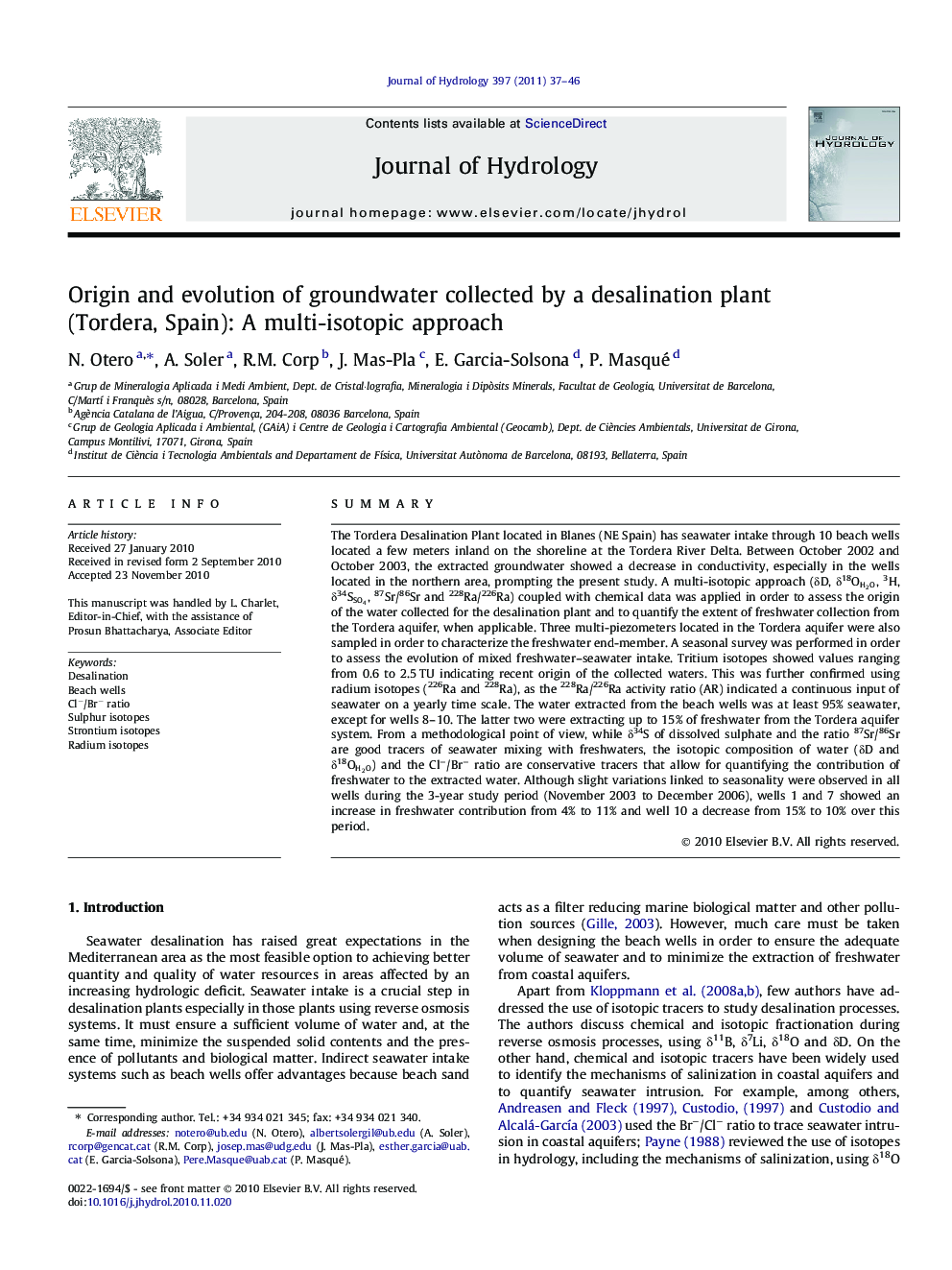| کد مقاله | کد نشریه | سال انتشار | مقاله انگلیسی | نسخه تمام متن |
|---|---|---|---|---|
| 4577853 | 1630034 | 2011 | 10 صفحه PDF | دانلود رایگان |

SummaryThe Tordera Desalination Plant located in Blanes (NE Spain) has seawater intake through 10 beach wells located a few meters inland on the shoreline at the Tordera River Delta. Between October 2002 and October 2003, the extracted groundwater showed a decrease in conductivity, especially in the wells located in the northern area, prompting the present study. A multi-isotopic approach (δD, δ18OH2OOH2O, 3H, δ34SSO4SSO4, 87Sr/86Sr and 228Ra/226Ra) coupled with chemical data was applied in order to assess the origin of the water collected for the desalination plant and to quantify the extent of freshwater collection from the Tordera aquifer, when applicable. Three multi-piezometers located in the Tordera aquifer were also sampled in order to characterize the freshwater end-member. A seasonal survey was performed in order to assess the evolution of mixed freshwater–seawater intake. Tritium isotopes showed values ranging from 0.6 to 2.5 TU indicating recent origin of the collected waters. This was further confirmed using radium isotopes (226Ra and 228Ra), as the 228Ra/226Ra activity ratio (AR) indicated a continuous input of seawater on a yearly time scale. The water extracted from the beach wells was at least 95% seawater, except for wells 8–10. The latter two were extracting up to 15% of freshwater from the Tordera aquifer system. From a methodological point of view, while δ34S of dissolved sulphate and the ratio 87Sr/86Sr are good tracers of seawater mixing with freshwaters, the isotopic composition of water (δD and δ18OH2OOH2O) and the Cl−/Br− ratio are conservative tracers that allow for quantifying the contribution of freshwater to the extracted water. Although slight variations linked to seasonality were observed in all wells during the 3-year study period (November 2003 to December 2006), wells 1 and 7 showed an increase in freshwater contribution from 4% to 11% and well 10 a decrease from 15% to 10% over this period.
Research highlights
► Multi-isotopic approach to assess origin of water collected for a desalination plant.
► Tritium and Radium isotopes confirmed a recent origin of the collected waters.
► D and 18O and Cl/Br allowed to quantify the freshwater contribution.
► 34S and 87Sr/86Sr are useful tracers in the opposite problem, seawater intrusion.
► Freshwater contribution was up to 15% for some wells.
Journal: Journal of Hydrology - Volume 397, Issues 1–2, 24 January 2011, Pages 37–46